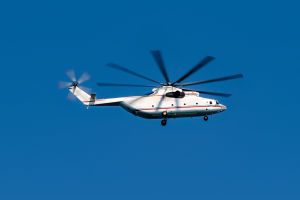Humanity has long been fascinated by the idea of flying, a dream that stretches back thousands of years. From the earliest attempts to mimic birds to the development of modern aircraft, the journey of aviation is filled with amazing innovations.
The story of how humans took to the skies starts in ancient China, where some of the first flying machines were created.
In this article, we will explore how the history of aviation began, how the kite played a key role, and how this ancient invention laid the groundwork for the aircraft we know today.
The Invention of the Kite: China’s Early Contribution
Over 2,000 years ago, the Chinese invented the kite, one of the first man-made flying objects. This groundbreaking invention laid the foundation for the study of aerodynamics and has had a lasting impact on the development of modern aircraft. The kite demonstrated the potential for flight and provided valuable insights into the principles of lift and wind resistance, which would later become essential to the design of airplanes.
Myth and Innovation: Humans and the Desire to Fly
Humans have always dreamed of flying, as seen in various myths, legends, and early inventions. For example, the ancient Greeks created mechanical birds, and in Australia, there were stories of flying contraptions. The desire to fly was not just a practical ambition but also a symbolic one, representing freedom and the conquest of the skies. These early myths and stories reflect our innate longing to soar above the earth, a desire that would later be realized with the invention of flight technology.
The Renaissance: A Scientific Approach to Flight
During the Renaissance, European scholars began applying scientific methods to the study of flight. They sought to understand the principles of flight more systematically, leading to the development of flying machines. These early experiments in flight were not always successful, but they represented a significant shift from mythological stories to scientific exploration. It was a period of intellectual curiosity that would inspire many more discoveries in the centuries to come.
The Industrial Revolution: A Turning Point for Aviation
By the late 18th century, the Industrial Revolution brought significant advancements in technology and manufacturing, which in turn accelerated the development of aviation. Hot air balloons, airships, and gliders were among the many flying machines that emerged during this time. These innovations were crucial stepping stones toward the creation of powered aircraft. As industrialization progressed, aviation technology advanced rapidly, paving the way for the first airplanes.
Global Conflicts and the Evolution of Airplanes
Major global conflicts had a profound impact on aviation. The need for faster, more efficient aircraft during periods of global conflict led to rapid improvements in aircraft design and technology. The development of new materials, better engines, and more sophisticated flight controls contributed to the rise of modern airplanes. By the end of major global conflicts, aviation had evolved significantly, and the world witnessed the dawn of the commercial air travel industry.
The Space Age: Beyond the Skies
After the mid-20th century, human exploration expanded beyond the Earth’s atmosphere. The space age marked a new era in aviation, with the development of spacecraft that could travel to the moon and beyond. This incredible leap forward in technology was made possible by the advancements in aerodynamics, propulsion systems, and materials science that had been developed over centuries. Today, aviation is not only about flying within Earth’s atmosphere but also about exploring the cosmos.
The Continuing Legacy of Aviation
Aviation has come a long way from its humble beginnings in ancient China with the invention of the kite. It has evolved through centuries of innovation, from the early myths of flight to the powerful aircraft of the present day. The journey of aviation is a testament to human ingenuity and determination, and it continues to shape the future of transportation and exploration.
We are now exploring beyond the Earth, but the principles and technologies developed over the centuries remain at the core of aviation.
As we look to the future, we can’t help but wonder: where will aviation take us next? What new technologies will continue to shape the skies and beyond? Let’s continue to keep our eyes on the sky and watch as the world of aviation continues to soar to new heights.


